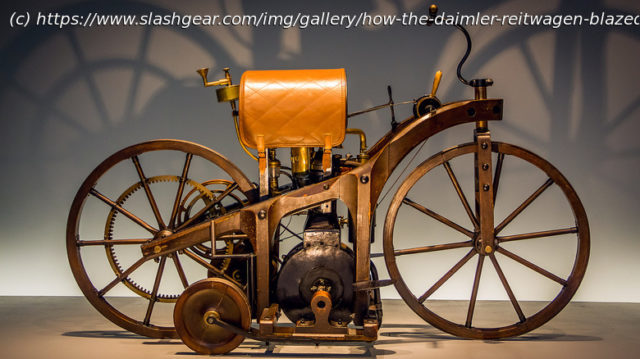Over a century before the motorcycles of today, Gottlieb Daimler created one of the earliest vehicles that could logically be called a motorcycle.
Technology is a wonderful thing and almost comical to look back on. After all, out of context, the specs of the innovative devices of the past are more than a little lackluster. For instance, the Wright Brothers‘ iconic Wright Flyer had a not-so-mighty 12 horsepower, while Carl Benz’s 1885 car boasted 0.75 horsepower. It’s not just about the numbers, though, but about what these extraordinary machines represented.
Just as the innovation of the Wrights led the industry to the most advanced fighter jets today, the creators of the first motorcycles inspired a process of more than a century of technological development and refinement. Admirers of the likes of the Top Oil-Ack Attack that achieved the Guinness World Record for Fastest Motorcycle Speed Achieved (376.3 mph) in September 2010 owe a lot of respect to the Daimler Reitwagen, its rather distant ancestor.
This remarkable machine from 1885 was a real pioneer in motorcycle history. For some, it was the very beginning of that history. It’s a story that anyone interested in motor vehicles should be familiar with.Setting the scene for the Daimler Reitwagen
The late 19th century was a fascinating time for the development of transportation. The internal combustion engine was just starting to be developed, as engineers were beginning to experiment with the potential of known power sources of the time. As Hugo Wilson writes in „The Ultimate Motorcycle Book,“ it had become clear that „replacing steam pressure with a controlled explosion was a logical move.“
Around this time, the bicycle was seeing exciting developments. The invention needed to be more comfortable and practical, and the iconic penny-farthing was the beginning of an attempt to redress the balance (literally). The vastness of its front wheel made for a more stable and comfortable mode of transport than the crude bicycles of before but still rendered it impractical to mount.






